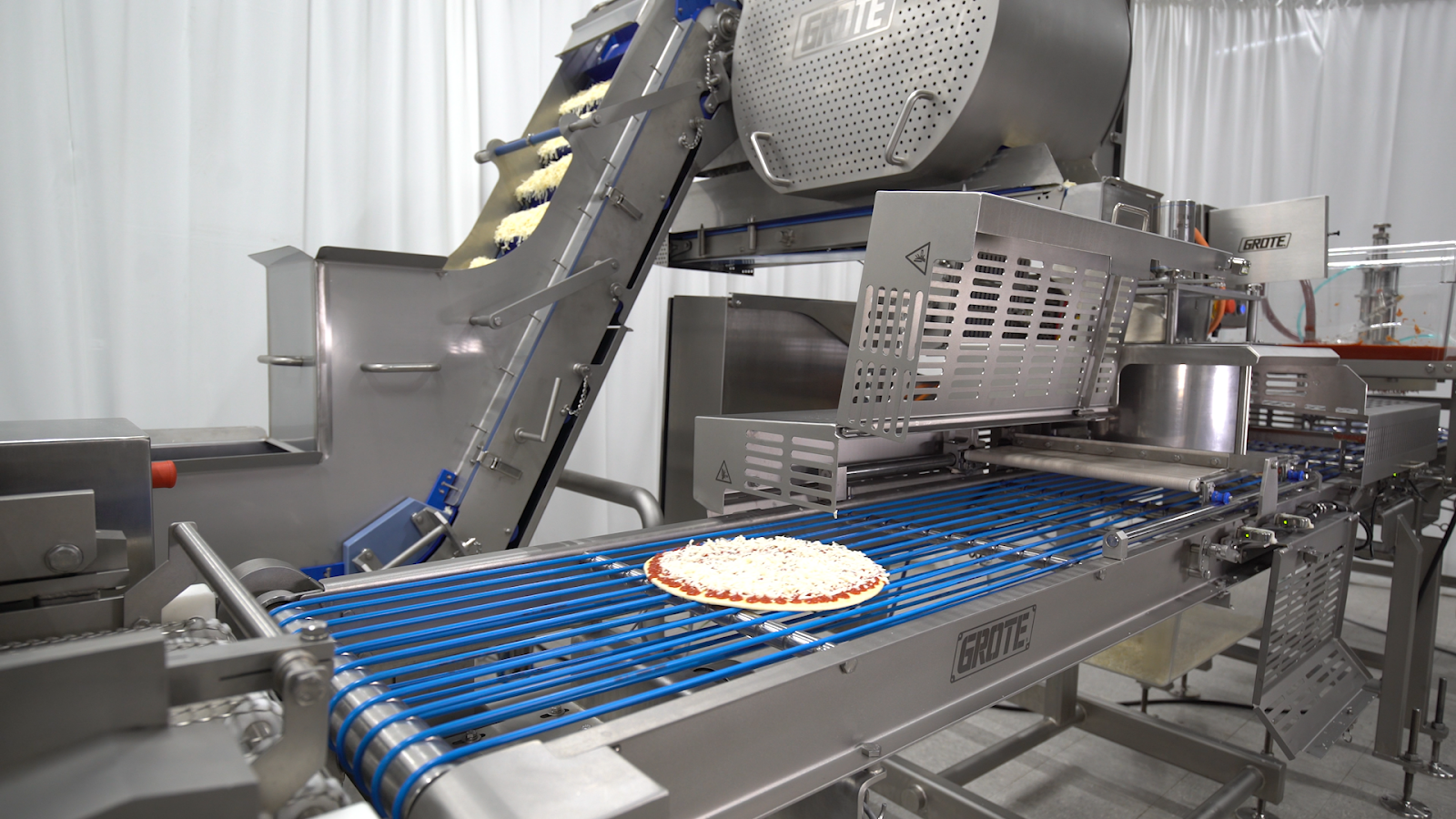Pizza production topping line equipment will help increase yields, improve productivity, cut down on waste, and ultimately lead to higher profits. However, how exactly do you determine your return on
Pizza production topping line equipment will help increase yields, improve productivity, cut down on waste, and ultimately lead to higher profits. However, how exactly do you determine your return on invested capital?
Labor, cost of materials, and waste are just some of the many factors that will go into figuring out the profitability of your investment. Read on to learn more about determining pizza production topping line equipment ROI.
We’ve also included a handy checklist of things you need to consider at the bottom of this blog post.
Why is Calculating ROI Important?
Taking the time to calculate the ROI of your pizza-making equipment investment is critical to making a more informed buying decision. You’d be surprised at how many companies neglect to crunch the numbers.
Calculating ROI is also essential for future success. Once you know the profitability of your machines, you’ll also know which areas of your business need improvement (e.g., labor) to achieve sustained year-over-year growth.
A third and final reason is that most businesses like to see a machine payback itself in 1.5 to 2 years. This has been the historical industry-standard payback time. Essentially, determining the cost of materials, labor, waste, and equipment is a big part of approving capital expenses.
Although, strict payback time isn’t necessarily the dealbreaker today that it may have been in the past. With shortages in labor and demands to meet certain production levels, automated machines could still make the most sense regardless of ROI.
Calculate Your Cost of Labor
Most businesses start with looking at the cost of labor as it’s the biggest factor dollar-wise. Currently, there is a major labor shortage that’s negatively affecting everything from small mom-and-pop pizzerias to large food conglomerates—and there’s no end in sight.
When calculating the cost of direct labor, don't just use wages. Be sure to include the following expenses as well to get the full direct labor cost:
- Payroll taxes
- Insurance benefits
- Retirement funds
- Other fringe benefits
Calculate the Cost of Not Automating
Look at the cost of not automating. Instead of looking at manual labor vs. automation by itself, you should also consider “no labor” vs. automation.
If you can’t hire workers consistently, a strict ROI has now become less important—as you can’t get anything done with a skeleton crew workforce.
For example, let’s say that you have five people on the line who place pepperonis on 20 pizzas per minute. A machine can do 45 pepperonis per minute—you only need one person to feed the machine.
Also, look at what you’re potentially missing out on if you don’t automate:
- Bigger orders
- New orders
- Expanded product lines
- Additional sales/revenue
Calculate Cost of Materials and Waste
The larger your business scales, the more cost of materials and waste factor into your ROI. The most expensive factor in pizza production is the toppings - cheese, meat, and vegetables - especially as customers want higher-quality products.
The formulas to determine waste and waste percentage are:
Waste weight x cost = Waste
Waste weight ÷ total weight = Waste percentage
Floor waste is a huge deal because you cannot re-use that product. Some topping applicators, such as the TruTop Ultra Waterfall Topping Applicator, use recirculation belts and a compact machine design to reduce floor waste to less than 1%. This adds up to a significant amount of savings.
Calculate Maintenance Costs
All machines have maintenance schedules, wear parts, and sanitation schedules. To truly calculate ROI and compare options, you need to account for these too. There are actual costs (parts, technicians, service visits) as well as downtime for maintenance, troubleshooting, and sanitation.
Not all pizza production topping line machines are created equal. While some may have an initial lower cost, you’ll wind up paying for it in terms of increased waste and longer sanitation/changeout downtime. Grote machines offer a sanitary design with tool-less removable belts and guarding that allow for lighting-quick maintenance, sanitation, and up to 96 hours between sanitation cycles.
Consider the Manufacturer of Your Equipment

The reputation and level of service you’ll get from the company that manufactures the equipment is something that many businesses don’t consider when calculating the ROI.
There are several questions you should ask yourself when considering pizza production topping line equipment:
- How well will the manufacturer provide support throughout the lifespan of their products?
- How big is their parts department, will they have the parts you need in a maintenance emergency, and how quickly can they ship them to your facility?
- Can they demo their products using your materials while replicating your exact operating conditions? This will give you peace of mind knowing their machines will work perfectly with your materials and processes.
- Does the manufacturer offer free installation and training?
Pizza production topping line Equipment ROI Checklist
Consider the following factors when determining the ROI of the pizza production topping line equipment you’re considering buying:
- Hourly wages
- Payroll taxes
- Workers compensation insurance
- Cost of materials
- Cost of waste
- Cost of labor
- Labor shortages
- Benefits
- Product costs
- Maintenance and sanitation costs
- Schedules
- Reputation of manufacturer
- Level of support from the manufacturer